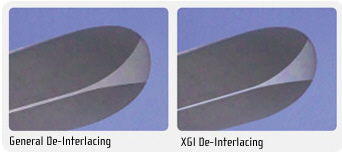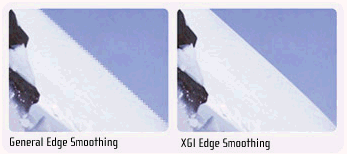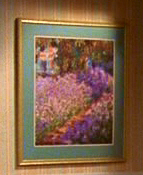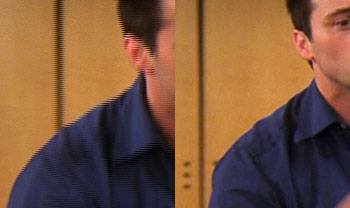 XGI's TrueVideo engine supports
analog LCD, digital LCD as well as conventional CRT monitors. The maximum
resolution analog LCD and CRT monitors support is 2048x1536. Digital LCD
resolution support maxes out at 1600x1200 which is something large LCD
users have to keep in mind. One of the Volari 8300's strongest suits is its
ability to support multiple displays at the same time. In fact it is possible to connect
up to three displays (two computer monitors and a television) at the
same time. The only limitation is when two CRT monitors are hooked up to
the Volari 8300, the RAMDACs cannot handle another video output (because CRT's
require a higher refresh rate than LCD monitors). Users of dual digital
LCD monitors can however connect the television at the same time.
XGI's TrueVideo engine supports
analog LCD, digital LCD as well as conventional CRT monitors. The maximum
resolution analog LCD and CRT monitors support is 2048x1536. Digital LCD
resolution support maxes out at 1600x1200 which is something large LCD
users have to keep in mind. One of the Volari 8300's strongest suits is its
ability to support multiple displays at the same time. In fact it is possible to connect
up to three displays (two computer monitors and a television) at the
same time. The only limitation is when two CRT monitors are hooked up to
the Volari 8300, the RAMDACs cannot handle another video output (because CRT's
require a higher refresh rate than LCD monitors). Users of dual digital
LCD monitors can however connect the television at the same time.
TV output is one of the XGI Volari 8300's specialties, and the card supports
HDTV video outputs 720P and 1080i. Of course, the Volari 8300
can also connect to conventional televisions through S-Video/Composite output cables.
In that situation, the resolution will go as high as
1024x768 in both NTSC and PAL, as long as the TV itself supports it.
XGI is particularly proud of the Volari 8300's video output features, and
these are easily the little GPU's best strengths. The Volari 8300 supports video overlay, bus master video capture
and MPEGII transport stream capture. The Volari 8300 uses XGI's third generation
advanced de-interlacing techniques as well as a 'five field based motion and
edge adaptive de-interlacing' process. Edge enhancement improvement is supported, and
is 7x2 pixel window based. XGI was a bit vague on the specifics
of how the Volari 8300 works aside from listing official
specs, unfortunately.

Looking
at the reference snowboard, we can see that standard de-interlacing makes the
picture quite fuzzy. XGI's de-interlacing on the other hand improves definition
of the snowboard and it stands out from the background better.

Looking
at XGI's edge smoothing picture it is clear that the lines are clearly defined,
just look at the edge between the snow and the sky. With XGI's edge smoothing,
the line is much sharper and there is a clear separation between the two.
TrueVideo in action
To illustrate TrueVideo in action, XGI bundled a
DVD copy of the last episode of Friends with its XGI Volari 8300 reference
card for the purposes of this review. There are a variety of scenes from
the DVD which illustrate different aspects of TrueVideo at work. All video shots were
recorded via PowerDVD 6's internal capturing ability with hardware
de-interlacing enabled.


Looking
at the picture frame in the picture on the left, the colours are still quite
vibrant and TrueVideo's colour gamma correction does a good job. The foosball
table image is particularly impressive since Joey and Chandler are moving quite
quickly in the area. The metal bars have clearly defined edges, and the foosball
characters do not simply blend into the background.

The
difference between software and hardware de-interlacing is dramatic, and this is
one area where XGI's TrueVideo really shines. On the left, the actors' shoulder
is not well defined and the vertical dark line in the background blends into its
surroundings. With the image on the right, the body is clearly defined and the
image quality improved. The details in the navy blue shirt are also more
pronounced and clear.
